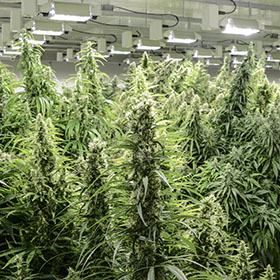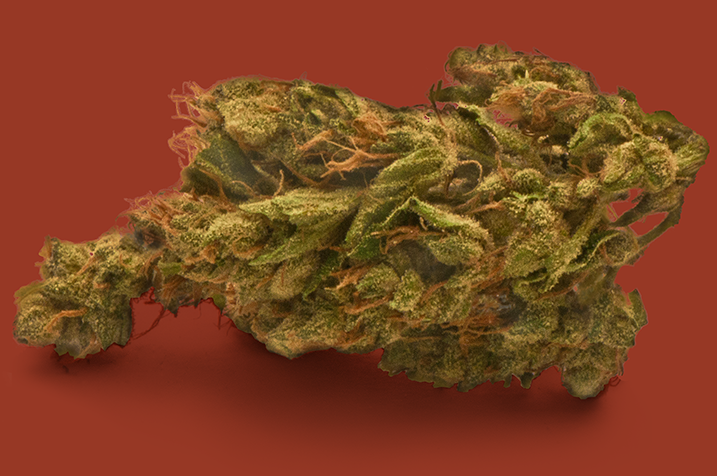
“Bedford Grow is one of the only cultivators I will purchase cartridges from. Starting with the uncut, pure cannabis oil to the cannabis derived terpenes you can taste the quality.”
Madeline Watson, Medical Cannabis Patient — Illinois
Our Commitment to Quality and Innovation
At Bedford Grow’s state-of-the-art facility, we grow medical-grade cannabis, extract oil, and infuse a variety of products using rigorous protocols and adhering to meticulous standards throughout every aspect of production. By maintaining clean environments free from contaminants and pesticides, we protect our plants from infection and cross-contamination from one growing room to the next.
We adhere to the strictest Illinois state standards for safety and cleanliness during the extraction of cannabis oil, its infusion into food products, and every step of the growing process. In this way, Bedford Grow brings maximum value, benefit, and quality. Through our commitment to quality and innovation, Bedford Grow is a leading developer and cultivator of medical-grade cannabis products.
We Cultivate Medical‐Grade Cannabis from Seed
BG continuously breeds one-of-a-kind strains from our unique seed bank. Every plant in our facility has been grown from seed to ensure no foreign genetic material, invasive pests, or pathogens are present. Cultivating from seeds allows us to maintain a more controlled growing environment with stronger plants, higher yields, potencies, and aromas. Seed growth also creates unique cannabinoid and terpenoid profiles. Our cultivators then use these profiles to develop new strains of cannabis, such as our award-winning Grape Sugar Cookies strain.
Hand Trimming: We Pride Ourselves on the Care that Goes into Every Plant
Our employees handle our flower with the utmost care as it is manicured and processed before consumption. Our team of seasoned trimmers hand trims each piece of flower that is cultivated, ensuring yield, potency, and flavor. As we cultivate our cannabis strains, each has its own unique properties consisting of appearance, shape, density, and trichome coverage; hand trimming allows us to evaluate each strain on an individual basis to choose the best trimming technique to meet the specific needs of each plant.
In order to keep the integrity of each flower that is manicured, our trimmers are thoroughly trained on each piece of flower, knowing what to trim. Hand trimming enables the unique properties of shape, density, and trichome coverage to be maintained, producing pure medicinal-grade products. In every phase of product research, development, and distribution, we remain committed to our core principles of compassion, quality, and innovation.

“Bedford Grow operates with the highest level of integrity and efficiency and in an ever changing industry, they grow and produce products of excellent, consistent quality.”
Amy Manganelli, Mapleglen Care Center — Rockford, IL
The Science of Strains
Several elements define and influence every cannabis strain. Its individual phenotype (meaning the genetic expression of that individual plant, commonly referred to as Indica, Sativa, or Hybrid), chemical profiles, and growing environment all distinguish the strain. The cannabinoid profile within each strain contains compounds such as THC and CBD that largely determine its effect (psychoactive or physiological). The strain’s terpene profile, however, has significant importance for two main reasons:
The Chemical Connection
First, by combining with select cannabinoid compounds, terpenes catalyze chemical processes central to the plant’s medicinal properties. This enables them to either block certain cell formations (e.g., those believed to cause cancer or inflammation) or act as a binding agent (i.e., forming molecules to stimulate appetite). Indeed, the knowledge of the chemical processes taking place at a molecular level is integral to inform scientists and doctors of the many medical benefits cannabis offers. Knowing what to address for particular health conditions or overall wellness can be daunting, however, the physical traits of terpenes are equally helpful — if not more so — to its chemical counterpart, for patients and practitioners alike. Many scholars also believe that terpenes are most responsible for the strain specificity and the subtle differences between varieties, which often are genetically similar and/or have similar cannabinoid profiles.
Scent Supremacy
The second powerful property of the terpene is its capability to produce and emit many distinctive aromas, which is actually a feature of a plant’s defense system. The good fortune for insects is that their attraction or repulsion to plant-based scents is instinctive. For example, honeybees are attracted to the scent in certain flowers that provide nourishing pollens (and, in turn, play a positive role in the plant’s reproductive cycle). Alternatively, predatory creatures have an innate response to avoid specific scents the plant creates to protect its survival.
The olfactory (smell) sense in humans, however, isn’t so intuitive. While we might share a common positive or negative association with certain smells, our nervous system isn’t hard-wired to discern which aromas represent the potential physiological responses we need or seek for comfort or relief. (In fact, from a very basic herbal medicine perspective, many therapeutic or nutritional resources are “hiding” in the produce section of the grocery store!) How could our bodies possibly self-select the cannabis strain most likely to generate successful results? Due to the complexity of the chemical interactions at play when a person consumes cannabis, there is sometimes a feeling-out process that must occur before a patient can determine which strain(s) are best for their particular conditions.
As our knowledge of cannabis continues to expand, so do the opportunities for its therapeutic value. As a result, medicinal cultivators continue to breed new strains of cannabis in an effort to expand the universe of health conditions this plant can potentially benefit. While research uncovers the relevant chemical properties in terpenes (and other molecules called “flavonoids” which are also responsible for aromas and flavors in cannabis), their many unique aromas can aid patients in choosing the cannabis strain most appropriate for each condition or desired effect.